A diode is the simplest electronic device. There are many different types of diodes. Most of are semiconductor diodes, while many diodes have a different construction from the typical PN junctions. All diodes are, by definition, two-terminal one-way voltage-controlled electronic valves.
Signal diodes are frequently used in electronic circuits. Often, the term signal diode is used to reference “small-signal diodes”. They are designed to operate small currents and high-frequency signals which is why they are commonly used in radio, television, communication, and switching circuits.
These general-purpose semiconductor diodes can be easily identified by their relatively small size and are either “Glass Passivated” diodes or “Point Contact” diodes. In a glass passivated diode, the PN junction is encapsulated in glass to protect it from contamination. There is a red or black band on one of the ends to identify the cathode terminal. The power and current rating of signal diodes is minimal – typically 500mW and 150mA, respectively. The signal diodes are best suitable for high-frequency applications or switching applications involving short pulse waveforms.
The point-contact diodes are slightly different in construction. A point-contact diode is constructed by creating a PN junction between a gold or tungsten wire and an n-type germanium material. The gold wire allows passage of high current through the junction. Point contact diodes are used to detect high-frequency signals as these diodes have the characteristic of blocking DC signals while passing the high-frequency AC.
Almost all signal diodes are either Silicon or Germanium but both types are slightly different in specifications. A silicon diode has high reverse resistance, while a germanium diode has lower. The cut-in voltage of a silicon diode is 0.6 to 0.7 V, and a germanium diode is 0.2 to 0.3 V. Silicon diodes have lower forward resistance that allows high peaks of the forward current and the reverse voltage. The symbol of signal diodes is the same as the generic diode.
Signal diode VI characteristics
The VI characteristics of a signal diode are the same as of any semiconductor diode.
The diode conducts current when positive supply is applied to the anode, and negative supply is applied to the cathode. The diode blocks any current if the voltage is applied in the reverse direction. Ideally, a signal diode must completely block a negative signal. If the peak of the negative signal is beyond the Zener voltage of the signal diode, it must break and may get permanently damaged. So, a signal diode is expected to work as a perfect one-way valve for high-frequency electronic signals. The positive signal should be higher than the knee voltage of the diode to be visible across the cathode of the diode. Usually, communication and switching circuits operate at signals 4V and higher. Therefore, a voltage drop of 0.3V for a germanium diode or 0.7V for a silicon diode has a negligible impact on the output signal levels.
Signal diode construction
Small-signal diodes are constructed as PN diodes with a tiny junction area. A smaller junction area gives the diode a smaller junction capacitance. This also reduces the reverse recovery time of the diode to few nanoseconds or less. Small junction capacitance and fast response make the diode suitable for high-frequency applications. The simplest construction of a signal diode is infusing p-type silicon over n-type silicon. However, simple construction has less predictable specifications.
A better construction of a signal diode is the Mesa diode. In a Mesa diode, a part of the PN block is etched away. This gives the diode a high topped plateau structure. Plus, the N-type layer is divided into two regions – one near the p-type material that is lightly doped and another heavily doped layer near the cathode contact. The entire structure is insulated by an encapsulating layer of silicon oxide or passivated glass to protect the diode from oxidation. The Mesa’diode construction makes the signal diode more reliable and results in better predictability of its parameters.
Signal diode specifications
Signal diodes are manufactured with a wide range of diode specifications. These static characteristics play an important role in the selection of a particular model for a given application. Some of the important signal diode specifications are as follow –
- Maximum Forward Current – It is the maximum forward current allowed to flow through the diode. When the diode is forward biased, the current through it rises exponentially. The flow of electric current through the diode dissipates energy in the form of heat. As more forward current flows through the diode, more heat is produced across its junction. This leads to thermal overload causing the diode to fail or damage. That is why all signal diodes have a maximum forward current rating. Typically, it is in mA and is provided for room temperature (25˚C). A resistor in series with the signal diode can be connected to protect the diode from high currents. The maximum forward current is indicated as ‘continuous forward current’ for DC signals and ‘repetitive forward current’ for AC signals. The repetitive forward current rating is always higher (almost double or greater) than the continuous forward current rating. The maximum current rating is also indicated as a non-repetitive peak forward current. This is typically given with respect to square waves of tested time periods. This rating is useful in determining the usefulness of the diode in high-frequency semiconductor applications whose peak signal amplitudes and frequency are well-defined.
- Maximum Reverse Voltage – It is the maximum reverse operating voltage that can be applied to the signal diode without reverse breakdown and damaging it. It is always less than the avalanche breakdown voltage and can range from few volts to thousands of volts. The PIV rating is a very crucial factor to consider whenever the signal diode has to be applied in AC applications. It must be considered whenever the diode is replaced in a circuit. The maximum reverse voltage is indicated as ‘continuous reverse voltage’ for DC signals and ‘repetitive reverse voltage’ for AC signals. Usually, both ratings are the same. So, the signal diodes have the same PIV rating for DC and AC applications.
- Total Power Dissipation – It is the maximum power that signal diode can dissipate in forward bias condition. As already mentioned, the signal diode dissipates electrical power in the form of heat across the junction. The current rises exponentially through the diode for a small change in the forward voltage. The power dissipation is derived by the multiplication of the forward voltage and current through the diode (P = V*I). The total power dissipation of signal diodes is in the range of mW provided for room temperature.
- Maximum Operating Temperature – It is indicated as the junction temperature in a diode datasheet. It is related to the power dissipation of the diode. It is provided in degree centigrade. The junction temperature depends on both the forward current as well as ambient temperature. Both factors increase the junction temperature or the operating temperature of the diode.
- Forward Voltage – The forward voltage is provided for different current levels. It is typically 0.6V to 1V for silicon diodes and 0.2 to 0.5V for germanium diodes.
- Reverse Current – The total reverse current includes reverse saturation current and current due to metallic contacts in the reverse bias condition. It is provided for given reverse voltage and typically is in uA or nA range.
- Diode Capacitance – It is the junction capacitance of the signal diode. It is provided for a particular frequency and is typically in the pF range.
- Reverse Recovery Time – It is an important factor for the selection of diode in switching applications. It is provided for a particular current level within a given range of forward and reverse current for a known load resistance. It is typically in nanoseconds.
- Forward Recovery Voltage – The voltage required to switch back the forward current level of the signal diode. It is a useful parameter for high-speed switching applications. It is usually greater than forward voltage of the diode.
Apart from the above-mentioned specifications, the datasheet of a signal diode has lots of graphs. It is worth noting that continuous forward current is plotted against ambient temperature, reverse current is plotted as a function of junction temperature, forward current is plotted as a function of the forward voltage, repetitive peak forward voltage is plotted as a function of pulse duration, and diode capacitance is plotted as a function of reverse voltage. These graphs show the interdependency of various parameters and their applicability in forward and reverse characteristic regions.
The following table lists some of the popular signal diodes with their notable parameters.
Note that this list is in no way exhaustive. It can’t be. However, this list can be a starting point to explore signal diodes. Look for the datasheets of the above-mentioned signal diodes. Observe the common parameters and specifications given for them. You will find some datasheets quite detailed and elaborate, while you may find some datasheets extremely precise. For example, the following datasheet of the 1N4148 signal diode has lots of details. However, the following datasheet of 1N4151 is very precise.
Compare both datasheets and figure common parameters and specifications that are essentially indicated in both datasheets. There are thousands of signal diodes available from hundreds of manufacturers. Research and find out the most popular signal diodes. Try exploring why some signal diodes are more popular while some have specific applications.
Signal diode applications
Some of the common applications of signal diodes are as follows:
Wave shaping or clipping – Signal diodes are frequently used for clipping AC signals. One or more signal diodes can be used to clip an input signal. One signal diode can clip either only a positive cycle or only a negative cycle. The use of two signal diodes can clip both cycles of an input AC signal. The signal diode bypasses the clipped signal in forward bias condition if connected parallel to the input port. The unclipped output signal is obtained for the reverse bias period of the diode. If both cycles are shaped using signal diodes, two signal diodes are connected to the circuit in the opposite configuration. Therefore, one diode operates on one cycle, and the other operates on the other cycle of the AC wave. The signal diode bypasses the unclipped signal if connected in series with the input signal. If the peak voltage of the AC signal is not much high, the forward voltage of the diode can have a significant impact on the wave shaping.
Clamping and DC restoration – Signal diodes are used for altering the DC level of AC signals. This is called diode clamping or DC restoration. A clamper circuit essentially involves a signal diode and a capacitor. Diode clamping is often used in digital circuits to reset upper and lower limits of square wave signals to either communicate signals between two systems of different signal levels or for other specific requirements like adjustment of pixel brightness of a display screen.
Protection diodes – Signal diodes are also used to protect other semiconductor devices and interfaces from sudden voltage spikes and excessive signal voltages. Such protection mechanisms are often required in control systems where semiconductor circuits or interfaces control high-power actuators. Freewheel diodes are widely used to protect semiconductor devices. A signal diode is connected in parallel to an inductive load which is useful in suppressing voltage spikes and transients. Freewheel diodes are commonly used to protect MOSFET and power transistors from inductive loads like motors and damage from reverse battery protection.
Voltage regulation – In some cases, signal diodes can also be employed for simple voltage regulation. In forward bias region, a signal diode has a constant voltage drop across it. By connecting, many signal diodes in series, a fixed voltage can be dropped from the input voltage. For voltage regulation, Zener diodes are a better alternative. Still, simple voltage regulation can be achieved using signal diodes.
Signal diode packages
There are thousands of signal diode models available from hundreds of manufacturers. Signal diodes are most commonly available as a discrete component in both through-hole and SMD packages. There are also signal diode arrays available to protect data lines in computers and digital circuits and protect data ports from voltage spikes and ESD. Diode arrays are available as isolated diodes, common cathode, and common anode arrays.
You may also like:
Filed Under: Tech Articles, What Is

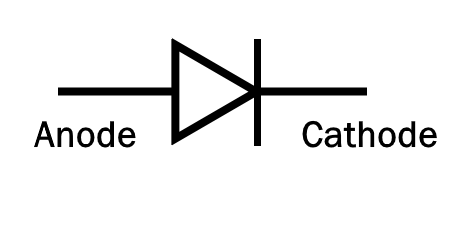
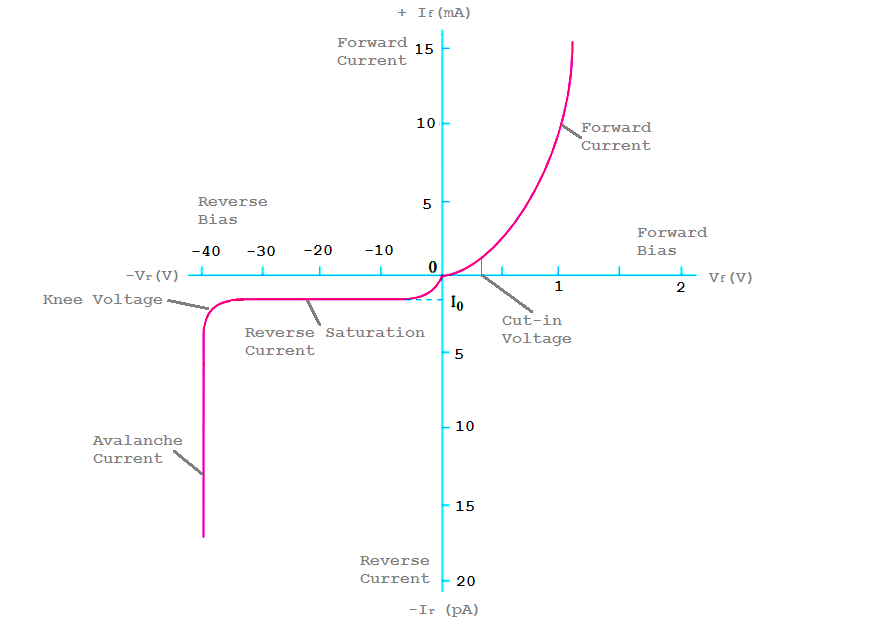

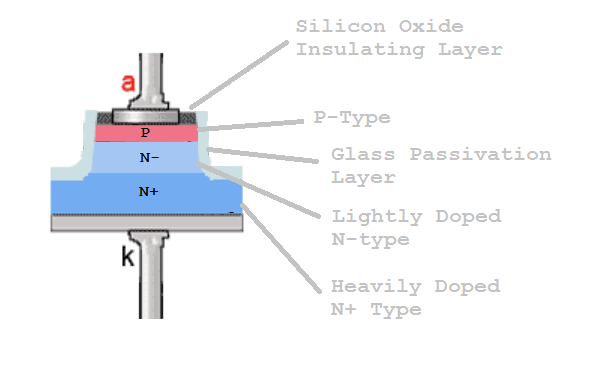
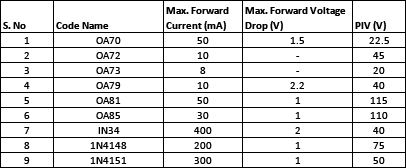
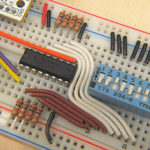
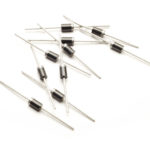
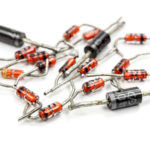
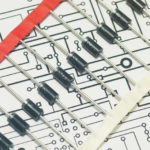


Questions related to this article?
👉Ask and discuss on Electro-Tech-Online.com and EDAboard.com forums.
Tell Us What You Think!!
You must be logged in to post a comment.